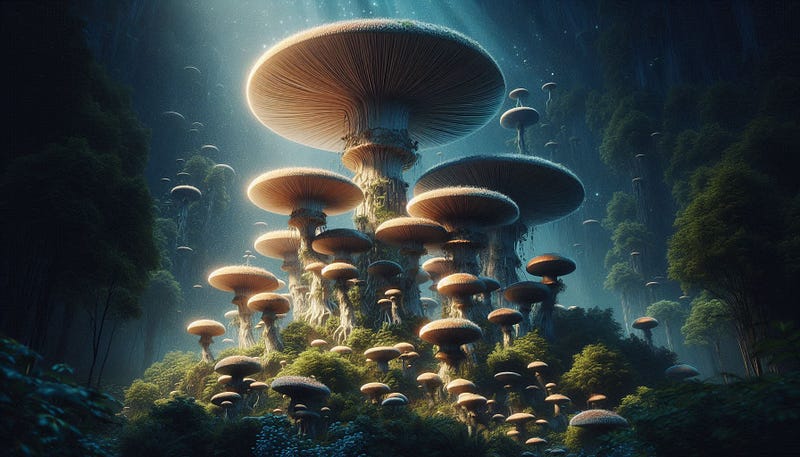The Ancient Giants: How Fungi Influenced Our Planet
Written on
Chapter 1: The Prehistoric Titans
Imagine a time around 400 million years ago when the landscape was dominated by towering structures reaching heights comparable to two-story buildings. These remarkable formations were not trees or shrubs, but ancient fungi known as "Prototaxites." These giants, which could grow up to 8 meters tall, were among the largest life forms on Earth, predating the dinosaurs. Prototaxites played a crucial role in sculpting the ancient environment, breaking down organic material and enriching the soil, thereby facilitating the development of thriving ecosystems. Their legacy serves as a testament to the significant role fungi have played in shaping our planet's history.

Section 1.1: The Modern-Day Role of Fungi
Fungi's influence stretches far beyond their ancient ancestors. In contemporary ecosystems, fungi are among the most adaptable and resilient organisms on Earth, crucial for maintaining ecological balance. Their unique ability to decompose some of the toughest substances known, such as lignin—the rigid component of wood—enables them to recycle vital nutrients back into the soil. Remarkably, fungi can break down not just organic materials, but also rocks, crude oil, and even synthetic items like polyurethane plastics, ensuring that essential nutrients are constantly cycled through the environment to support the growth of various organisms.
Subsection 1.1.1: Environmental Remediation and Pollution Control
This extraordinary capability to decompose seemingly impervious materials has positioned fungi as essential players in environmental remediation. Certain species can neutralize explosive TNT, making them invaluable for cleaning up contaminated areas. Even more impressive is their ability to thrive in radioactive conditions, where most life forms would struggle to survive. These fungi not only endure but also break down and absorb harmful substances, making them vital allies in addressing pollution and offering innovative solutions to some of the most pressing environmental challenges we face today.
Chapter 2: Fungi’s Atmospheric Influence
Yet fungi's impact extends beyond the ground; they also play a surprising role in the atmosphere. The spores produced by mushrooms, which are tiny reproductive units, can often be found suspended in clouds. These spores are not merely drifting along; they actively contribute to weather phenomena. By serving as nuclei for water droplets, they can instigate rain formation, while their presence may also lead to the creation of ice crystals, resulting in snow, sleet, or hail. This relationship between fungi and atmospheric conditions highlights the intricate connections between living organisms and Earth's systems, illustrating how fungi influence everything from the soil to the sky.
This video explores how giant fungal spikes dominated ancient landscapes, shedding light on the massive role of fungi in shaping ecosystems.
This video discusses the fascinating history of fungi that grew to the size of trees, further revealing their impact on the planet.
From the ancient Prototaxites that molded prehistoric terrains to the fungi that help regulate our climate today, these remarkable organisms have always played a critical role in Earth's ecosystems. Fungi act as nature's architects and cleaners, shaping landscapes, purifying environments, and even influencing weather patterns. Their journey is a testament to the intricate web of life on Earth, where even the smallest organisms can make a significant impact on the world around them.
If you're interested in delving deeper into the world of fungi, consider reading “Entangled Life” by Merlin Sheldrake.
